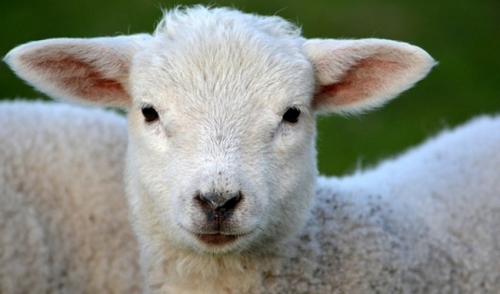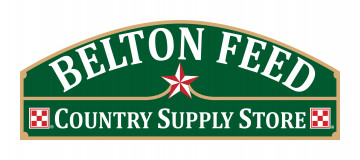{article.name}
Stay Informed
Basic Showlamb Nutrition

- Share this:
- Share on Facebook
- Pin on Pinterest
- Tweet on Twitter
Feeding lambs for show involves some basic principles of nutrition.Whether lambs are fed commercially for market, or diets intended to produce specific physical responses, we must remember that lambs are ruminants.
It is of upmost importance that we maintain rumen health and function. Feeding grain based diets without providing sufficient roughage in the lamb’s diet can lead to unintended consequences. Simplified, the rumen is where it’s at when we talk showlamb nutrition. If rumen function is impaired, the lamb is usually on a roller coaster ride of feed intake. Growth and subsequent physical performance suffers, and the lamb cannot express it’s full genetic potential.
At minimum, each lamb should receive a double handful, or about 1/4 lbs (4 ounces) of a good quality alfalfa hay per day. Although progressive judges are selecting lambs with more base width, rib shape, and deeper fore rib, we still want lambs that are relatively tubular in their design. That means a lamb with an excessive middle usually will not be placed high in class.
Poor quality forage passes slowly through the digestive tract of the lamb. So, feeding a low or moderate quality roughage source tends to put some middle or a “belly” on lambs. The higher quality alfalfa passes through much faster, maintaining the “tubular” appearance of the lamb, yet meeting the lamb’s fiber requirement.
It is also important to feed a quality alfalfa with a minimum 1 1/2 to 2 inches of fiber length. Feeding alfalfa pellets or ground hay does not have the effective NDF needed for rumen health. You may also notice wool chewing or wool pulling in lambs. The leading cause of this activity in sheep is inadequate fiber length, resulting in insufficient effective NDF. It is important here to note that feeding a roughage source with 1 1/2 to 2 inches of fiber length usually prevents wool biting, chewing or pulling. However, once a lamb begins to pull wool, it usually will not stop. It quickly becomes a habit, and you will need to keep the lambs covered or separated to stop this activity.
Water is also extremely important. Water is directly related to feed intake. The water source needs to be clean, fresh, abundant, and not too hot or cold at all times to ensure proper feed intake and growth performance. Keeping the lamb hydrated at all times will also help prevent the occurrence of urinary calculi. A good showlamb feed will contain ammonium chloride for the prevention of this condition. However, if the lamb is not drinking sufficient water, or you do not hydrate the lamb properly at or after a show, the lamb is at elevated risk of developing urinary calculi.
Showlamb feeds come in various forms and protein content. You might think about feeding a showlamb feed with about 18% crude protein, such as HONOR Show Chow Showlamb Grower DX, at least for the initial 45 to 60 days of the feeding period. Showlamb feeds are usually high in crude protein because we are limit feeding very muscular lambs that have much higher daily nutrient requirements.
However, energy is still very important. Energy provides the fuel for growth and ever metabolic process. A low energy feed will usually result in poor growth performance and an unsatisfactory outcome to your showlamb project.
Some feeders like to transition to a lower crude protein feed (HONOR Show Chow Showlamb Grower 15% DX) at some point in the feeding period. This works well as long as the lower protein feed also has an increase in energy content. Feeding HONOR Show Chow Showlamb Grower DX, and High Octane Power Fuel to increase the energy density of the diet to increase cover or body condition is also appropriate. There is no one precise feeding regimen for every lamb. Each one is a little different, and the feeding strategy will depend upon what is needed to accomplish in the lamb.
High protein supplements such as High Octane Champion Drive, are sometimes useful in either trimming body condition, or increasing the muscling of the lamb. The amount to be fed will depend upon the product, and again what is needed to be accomplished in the lamb.
The daily feed amount will again depend upon the lamb, it’s size, age, and the nutrient content of the feed. However, feeding HONOR Show Chow Showlamb Grower DX at 3 to 4% of the lamb’s bodyweight is sufficient.
It is always a good idea to feed a medicated feed to lambs. Coccidiosis is usually the lamb’s biggest immune challenge. All HONOR Show Chow Showlamb feeds are medicated with Deccox® to prevent and control coccidiosis.
It is also important to note what a good showlamb feed will and will not do. A good showlamb feed will:
- Maintain a consistent feed intake (as long as water and roughage are not an issue)
- Result in adequate growth and development of the lamb
- Result in a good physical appearance of the lamb (skin, hair, and wool)
- Result in proper conditioning of the lamb
- Result in the lamb expressing it’s genetic potential
- Contain ammonium chloride in order to prevent urinary calculi
A good showlamb feed will NOT:
- Create more bone
- Make the lamb longer
- Increase base width
- Increase the length of the lamb’s neck
- Increase length of loin
- Increase length of hindsaddle
- Strength a weak topped lamb (broken behind the shoulders)
In other words, you will need to select a quality lamb with the genetic potential to respond to good nutrition; genetic potential that results in a fairly heavily muscled lamb. After all, we are feeding and showing market lambs. A market animal needs to exhibit muscle. A poorly muscled lamb will normally find its way to the bottom of most classes. If you select a lamb that has inferior muscling, the greatest feed money can buy is not going to result in producing adequate muscle.
Build a relationship with the breeder of your choice. They will be more than happy to assist you. You can be assured they want their lambs to perform their best for you.
It is a good idea to feed more than one lamb. Sheep are herding or flocking type creatures, and two lambs do much better than one by itself. Lambs eat and perform much better when a companion or pen mate is present. A consistent exercise program is essential to the success of your showlamb project and to obtain the maximum response between the nutrition – genetic potential interaction. The extent and duration of the exercise will depend what is required to accomplish in the lamb. However, exercising the lamb 3 to 4 times per week should be sufficient.
Good luck with your showlamb project. Remember that if you need help do not be afraid to ask. Breeders and more experienced exhibitors are an excellent source of information and knowledge.
Special Offers
We are constantly adding new specials to our site. Be sure to check back often!


Comments